We should welcome the news that the BBC Natural History Unit, the world’s leading producer and broadcaster of nature programmes, is applying its considerable expertise to bringing angling back to mainstream television with the forthcoming series The Big Fish. The Angling Trust is proud to be supporting and promoting this exciting new programme which will see anglers from the UK pitting their wits and skills up against some unfamiliar species in six exotic, but challenging, locations around the world.
Talking to the programme’s production team about how the anglers will have to prepare themselves for fishing in far off waters got me thinking about my own foreign fishing adventures and how much I’ve had to learn about tactics, travel and tackle along the way.
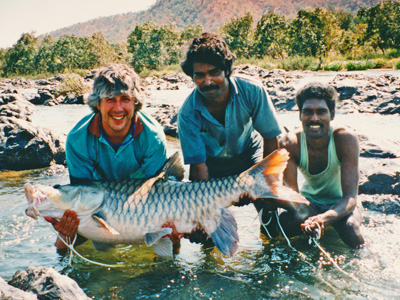 As it happens I’m right in the middle of another ‘fish frenzy’ in preparation for my first ever trip to the Himalayas to try and catch both golden and chocolate mahseer. The dining room table is a mass of lures, braid and various items of luggage that will hopefully withstand the rigours of white water rafting and possibly the hardest fighting freshwater fish on the planet.
As it happens I’m right in the middle of another ‘fish frenzy’ in preparation for my first ever trip to the Himalayas to try and catch both golden and chocolate mahseer. The dining room table is a mass of lures, braid and various items of luggage that will hopefully withstand the rigours of white water rafting and possibly the hardest fighting freshwater fish on the planet.
Back in the 1990s I caught some huge mahseer in southern India and although these mountain river battlers of the north may be a little smaller, they inhabit such remote and hostile environments that this was one challenge I wasn’t going to let pass me by.
Since standing down from the UK Parliament in 2010 I’ve been lucky enough to have landed some cracking fish on my travels including: marlin, kingfish, tuna, shark, barramundi and silver trevally in Australia; snapper, kahawai and trout in New Zealand; sailfish, amberjack and wahoo in Kenya; giant trevally and bonefish in the Seychelles; bass and pollack in Ireland; golden dorado in Argentina; salmon in Scotland and tarpon, barracuda and grouper in Cuba.
What follows is hopefully a handy guide to making the most of a trip of lifetime and ensuring that you put yourself in with a fighting chance of actually landing those fish you’ve spent so long dreaming about.
Travel rods
The arrival of good quality, affordable, multi-piece travel rods couldn’t come quickly enough for those of us fed up with lugging huge, extendable ‘bazooka-style’ rod cases through international airport terminals. Being able to pack your rods away in your luggage is not only convenient, it’s one less thing for the airlines to lose, or send to the wrong continent.
They also enable the traveling angler to disguise to would be thieves the fact that those bags may be worth pilfering. For heavy duty work I can personally recommend the Deep Blue range from Snowbee and the Trek travel rods from Fox – these tough workhorses will land anything from tarpon to giant marlin.
For lighter work, and by that I mean using 30 to 50lb braid and lures up to 50 grams, I’ve become a huge fan of the Shimano Exage and the Sonik new SK4 ranges. The Exage was probably the first quality travel rod on the market and I’m packing their new 9ft 11inch model, rated at 20 to 50 grams, for the mahseer trip as a back up to the heavier Snowbee tarpon rod which can throw lures and spoons up to 100grams. Sonik are relatively new kids on the block but I took the SK4 to the Scillies last summer and it was just the job for firing out light soft plastics while retaining enough power to bully some pretty powerful wrasse out of their rocky homes.
Reels that last
The big learning curve for me came during my time in Australia when my previously ‘indestructible’ Shimano Baitrunner literally exploded as I tried, unsuccessfully, to keep an angry kingfish out of the reef. I’m afraid the clutches on our standard freshwater reels are rarely up to the job of using 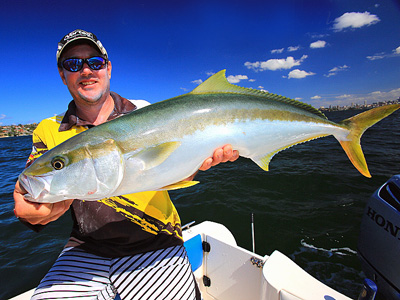 heavy braid on hard fighting sport fish. A great place to check out informed and unbiased reviews of various reels is the American striped bass forum Stripers Online – but don’t make the obvious spelling mistake when googling their site or you could be in for a shock!
heavy braid on hard fighting sport fish. A great place to check out informed and unbiased reviews of various reels is the American striped bass forum Stripers Online – but don’t make the obvious spelling mistake when googling their site or you could be in for a shock!
The Yanks take their tackle seriously and it was THIS review that decided me to track down a nearly new Shimano Spheros 8000 on eBay at a bargain price.
Penn also have an excellent range of spinning reels and their Fierce 5000 is reasonably priced but with a drag that pulls an impressive 25lb. Again, both models are in the bag for India and have been spooled up with 50 and 65lb braid in readiness for tackling muscular mahseer in a powerful and rocky river.
If your pockets are deep enough then it’s worth taking a peek at Daiwa’s Saltiga range with their mag sealed, carbon clutches that can slow down a London bus if required. These are top quality bits of kit that have landed huge fish all over the world and will last half a lifetime. Circle hooks even allow you to unhook a shark!
Hooks that hold
Coming from an environment where I rarely caught anything with teeth it took me a while to adjust to some of the creatures I was 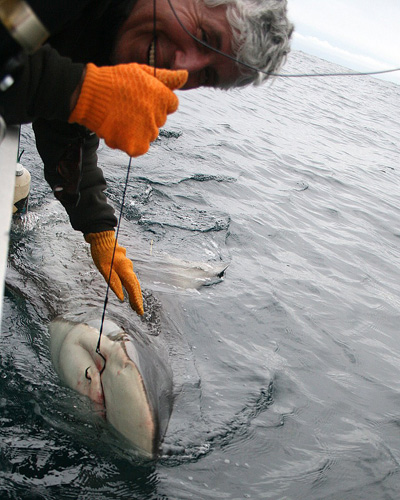 encountering Down Under. There was one fish, known as the bluefish in America – the Aussies call them ‘tailor’ – which also went by the nickname of ‘chopper’. Whether using bread, prawn or fish baits in Sydney Harbour, the result was invariably the same – a savage bite and a missing hook! They wouldn’t look at a bait on a wire trace so I resorted to using long shanked hooks in sizes 2 and 4 and the problem was all but solved. These days I always carry a few long shanks with me on my travels as even some of the baitfish intended for larger quarry can have sets of tackle robbing teeth.
encountering Down Under. There was one fish, known as the bluefish in America – the Aussies call them ‘tailor’ – which also went by the nickname of ‘chopper’. Whether using bread, prawn or fish baits in Sydney Harbour, the result was invariably the same – a savage bite and a missing hook! They wouldn’t look at a bait on a wire trace so I resorted to using long shanked hooks in sizes 2 and 4 and the problem was all but solved. These days I always carry a few long shanks with me on my travels as even some of the baitfish intended for larger quarry can have sets of tackle robbing teeth.
I like to release the vast majority of the fish I catch and deep hooking has no place in the fishing I do. I learned to use circle hooks for livebaiting and, once I got over the urge to strike and simply tightened into the running fish, I don’t recall ever hooking anything, even sharks, anywhere other than in the corner of the mouth.
The hook is the last item of tackle that should be compromised and it’s worth spending the extra on brands like Owner, Gamakatsu and Eagle Claw to ensure that when that dream fish finally comes along you are not going to be reeling in a crushed or straightened piece of useless wire.
One final tip that I learned the expensive way – chemically sharpened and super strong hooks like the Owner ST66 are brilliant until you bounce them across the rocks a couple of times. Then you discover that they are virtually impossible to sharpen so it’s worth also packing a brand that can be filed back into shape.
Lines and braid
You can take your pick from the mass of braids available but you won’t go far wrong with bulk spools of PowerPro or Berkley’s Whiplash for your heavier work. Check out Henry Gilbey’s blog for an in depth analysis of what else is on the market and for his favourite 8 strand braids which will deliver extra yards on the cast – but at a price. 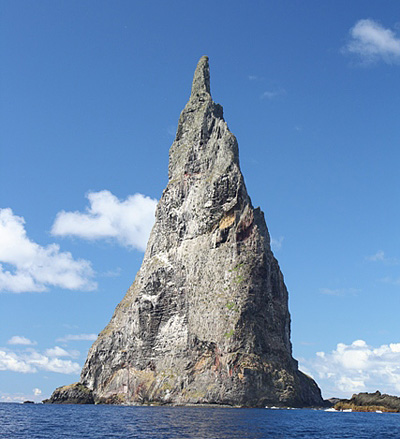
Unless I’m targeting beasties like barracuda, dorado, wahoo or sharks I prefer to use tough, clear mono or fluorocarbon for my leaders. Again there are plenty of top quality brands to choose from but I’ve settled on Seaguar fluoro for anything below 35lb and Berkley Big Game for when towrope is required. Remember that mono is far more abrasion resistant than braid and a decent length of leader can reduce losses from rub offs on rocks or even from contact with the sharper parts of the fishes’ bodies.
Essential Knots
I’ve become a bit of an anorak about sport fishing knots in recent years and this probably has something to do with an epic, but frustrating, session in the shadow of the famous Balls Pyramid – an ocean rock stack far out in the Tasman Sea.
We were actually hunting yellow-tailed kingfish on the surface when I spotted a shoal of big silver trevally hugging a reef some 20 metres down. These things pull like trains but the first fish was eventually landed. I broke on the second and retied the 30lb braid to a 40lb leader using the usual Albright knot. In less than an hour I had eight more hook ups but only landed two more fish due to the leader knot popping or getting cut off on the reef when I eased back on the clutch. Those trevally were between ten and twenty pounds and I’m sure the gear would have been sufficient if only I had used a stronger knot.
Braided Doubles
A large braided loop at the end of the mainline has two advantages. It enables the use of the strongest of all braid-to-mono knots and it provides some additional security at the business end of the outfit when bringing a fish to the net or boat. The simplest double of all is the Surgeon’s Loop which is nothing more than a double overhand knot but I prefer to use the Bimini Twist.
This favourite of big game anglers can be tied with braid or mono but takes a bit of practice and involves the use of both hands and at least one foot. Check out the clip below and you’ll see how and why.
The GT Knot
Just the name of this knot should inspire confidence for if there’s a fish in the ocean that pulls harder pound for pound than a giant trevally then I’ve yet to find it!
It is easy tie to a braided loop, it will never slip and, importantly, the mono tag ends up pointing up the line, meaning that it can be cast through the rod rings without catching.
It is the perfect knot for those long, wind on, leaders necessary for bringing big fish safely to the boat.
Check it out here:
The FG Knot
The FG is now Henry Gilbey’s favourite and can be tied to a single strand of braided main line. This one is fiddly to tie but has such a low profile it runs through the rod rings so smoothly you will barely hear it. This is because there’s no loop in the mono as, instead, the knot relies on a cross weave of braided wraps digging into the leader in the manner of a Chinese Burn.
The instructional video is below:
Lefty’s Loop Knot
I’m assuming everyone reading this can tie a Grinner or Uni Knot and these are perfectly good for use with swivels or eyed hooks. However, there are 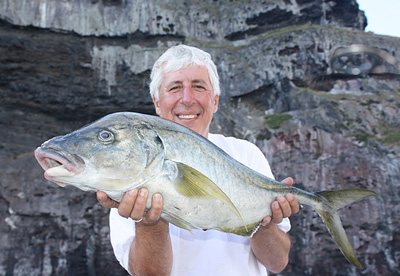 times when you want a reliable non slip loop knot to allow the fly or lure more freedom of movement than a stiff mono or fluoro leader will permit.
times when you want a reliable non slip loop knot to allow the fly or lure more freedom of movement than a stiff mono or fluoro leader will permit.
Named after the famous American fly fisherman Lefty Kreh this is a knot well worth learning and one in which I have complete confidence. It also ties up easier than the Grinner in thicker diameter lines so I often use it as an alternative.
You can check it out in an animated sequence HERE
More Knots
There’s a heap more knots out there and you can find a selection HERE but if you master the four above you won’t go too far wrong.
Creature Comforts
The Himalayan trip will involve rafting through some none too warm water and sleeping in tents on shingle beaches. Keeping warm and enjoying a decent night’s sleep are priorities for me these days, which is why I’ve handed over some more cash for a blow up mattress and some neoprene long johns.
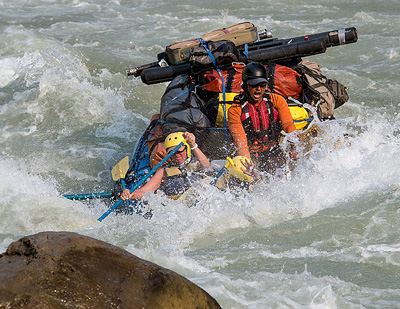 I’m told we may suffer from sand flies at dawn and dusk so those light trousers which zip apart at the knee are going into the bag along with a couple of long sleeved tropical sport fishing shirts.
I’m told we may suffer from sand flies at dawn and dusk so those light trousers which zip apart at the knee are going into the bag along with a couple of long sleeved tropical sport fishing shirts.
Staying Safe
A bit of danger and excitement are a big part of these trips but it makes no sense to take unnecessary risks.
The sea and the jungle can be dangerous places, so go with people who know what they are doing, wear life jackets where appropriate, respect the wildlife – particularly those that might want to eat you, protect your head and skin from the sun and never travel without a first aid kit and a means of escape.
I’m counting the days until that plane takes off on the next bucket list adventure and I like to think I’ll be prepared for whatever challenges the river and the fishing has to offer. I hope the contestants in the BBC’s Big Fish programme become just as excited and that they get,not only to hook, but to land’ some fish of their dreams.
Note: We are hoping to feature a video of the Himalayan adventure in a future edition of ‘Fishing Britain’ on the You Tube Channel
This article forms part of Martin’s Angling Trust Fighting for Fishing blog and is reproduced in an edited form here on FishingMagic with his kind permission.










